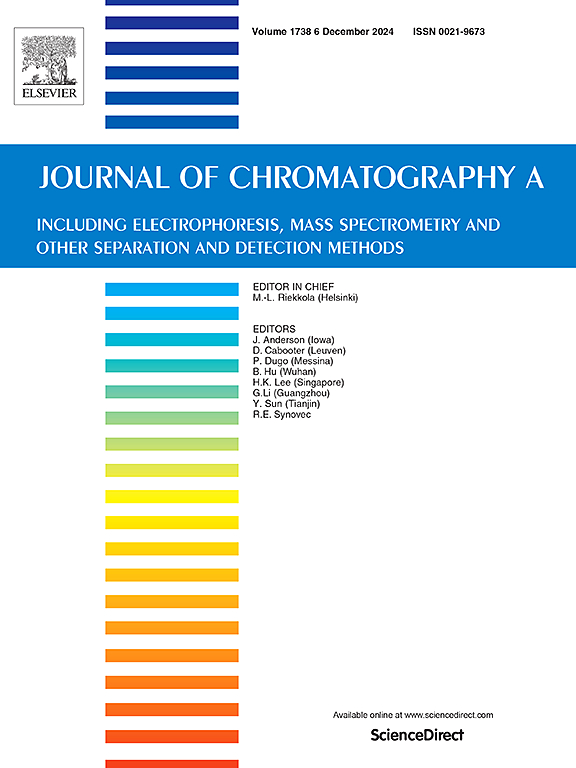分子印迹磁固相萃取技术的研究进展:设计、制备及应用。
IF 4
2区 化学
Q1 BIOCHEMICAL RESEARCH METHODS
引用次数: 0
摘要
磁性固相萃取(MSPE)由于具有操作简单、萃取过程快速、成本低、生态友好等优点,在复杂基质中抗生素的分离和富集中得到了广泛的应用。近年来,具有高特异性识别性能的磁性分子印迹纳米颗粒(MMINs)在MSPE的形式下被广泛应用于抗生素的特异性提取。在此基础上,综述了MMINs在抗生素残留分析中的最新进展。首先,介绍了MMINs的常见结构,包括核-壳结构、核-卫星结构、空腔结构和纳米管/纳米片支撑结构。在此基础上,重点介绍了MMINs的合成策略,包括一步法制备和多步法制备(沉淀聚合、乳液聚合、悬浮聚合和表面印迹技术)。综述了MMINs在环境和食品样品中磺胺类、喹诺酮类、四环素类、β-内酰胺类、氨基糖苷类等多种抗生素残留的选择性提取中的应用。最后,在综述的最后一节中概述了MMINs存在的问题和未来的发展前景。本文章由计算机程序翻译,如有差异,请以英文原文为准。
A review on molecularly imprinted magnetic solid phase extraction emphasizing the analysis of antibiotics in complex matrices:Design, preparation, and application
Magnetic solid phase extraction (MSPE) has been widely employed in the isolation and enrichment of antibiotics in complex matrices because it presents various unique advantages over traditional SPE including simple operation, fast extraction procedure, low cost and eco-friendliness. In recently years, magnetic molecularly imprinted nanoparticles (MMINs) containing highly specific recognition performance have been widely used to specific extraction of antibiotics under the format of MSPE. In this connection, recent advances of MMINs in the analysis of antibiotic residues are reviewed. Firstly, the common structure of MMINs including core-shell, core-satellite, cavity structure and nanotube/nanosheet-supported structurewere introduced. After that, a main section covers the synthesis strategies of MMINs including one-step preparation and multi-steps preparation (precipitation polymerization, emulsion polymerization, suspension polymerization and surface imprinting technique) were illustrated. Furthermore, the applications of MMINs in the selective extraction of various antibiotic residues (sulfonamides, quinolones, tetracyclines, β-lactams, aminoglycosides and so on) in environmental and food samples were summarized. Finally, the existing problems and future prospects of MMINs were outlined in the final section of the review.
求助全文
通过发布文献求助,成功后即可免费获取论文全文。
去求助
来源期刊

Journal of Chromatography A
化学-分析化学
CiteScore
7.90
自引率
14.60%
发文量
742
审稿时长
45 days
期刊介绍:
The Journal of Chromatography A provides a forum for the publication of original research and critical reviews on all aspects of fundamental and applied separation science. The scope of the journal includes chromatography and related techniques, electromigration techniques (e.g. electrophoresis, electrochromatography), hyphenated and other multi-dimensional techniques, sample preparation, and detection methods such as mass spectrometry. Contributions consist mainly of research papers dealing with the theory of separation methods, instrumental developments and analytical and preparative applications of general interest.
 求助内容:
求助内容: 应助结果提醒方式:
应助结果提醒方式:


